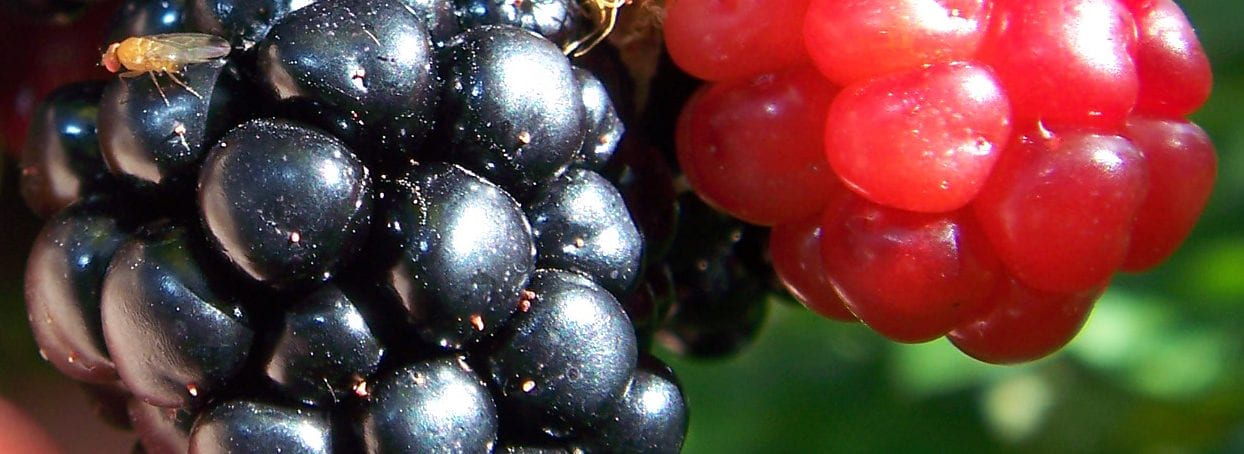As we emerge from the clutches of a long and very cold winter, we’re pondering if SWD was killed off…as were many fruit buds in New York. A study in Japan (Kimura 2004) investigating cold and heat tolerance of fruit flies included SWD. Interestingly, SWD is distributed in all three of the climatic regions in Japan from which drosophilid flies were collected for the research, the cool-temperate region (January mean temperature 23 F, August mean temperature 71 F), the warm-temperate region (January mean temperature 39 F, August mean temperature 80 F), and the subtropical region (January mean temperature 64 F, August mean temperature 82 F). Progeny from SWD females collected from each of these regions showed little variation in the range of heat and cold tolerance; the conclusion being that populations don’t gain much improved heat tolerance in the subtropical region or much improved cold tolerance in the cold-temperate region.
To test SWD’s temperature tolerance, flies were held at constant temperature in dark for a 24-hr period to determine the lethal temperature (LT) at which 25%, 50%, and 75% of the flies died. 75% of females die at 28.7 F and 75% of males die at 30.7 F.
Can we start celebrating? With low temperatures dipping into the negative teens this winter, was LT 100% reached? -17 F is certainly well below the LT 75% of 28.7 F. I would argue that a distinct possibility exists that a majority of SWD attempting to overwinter in the New York died this winter. However, remember how small SWD is and that microclimates do exist near buildings, compost piles, etc. where temperature may not drop as low as the recorded air temperature. Also, research has yet to determine if SWD overwinters in New York, so maybe the argument is irrelevant?
Another take home message from the lethal temperature table for SWD is that they die at and above 90 F. Last summer was hot and SWD damage seemed not as severe to many of us as in 2012. Perhaps adult flies died off during periods of 90 F and above this summer. As June nears its end this year, invest in an accurate thermometer and keep track of how hot it gets.
Masahito T. Kimura. 2004. Cold and Heat Tolerance of Drosophilid Flies with Reference to Their Latitudinal Distributions. Oecologia, Vol. 140, No. 3 pp. 442-449.


